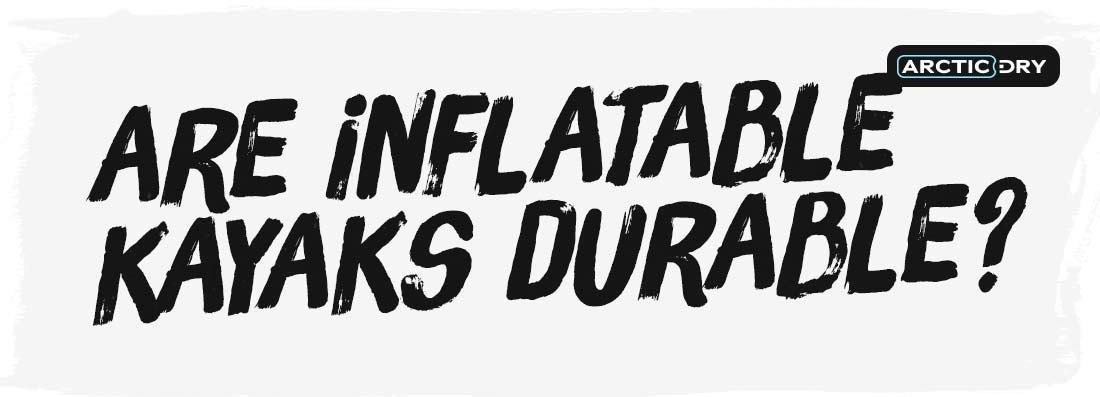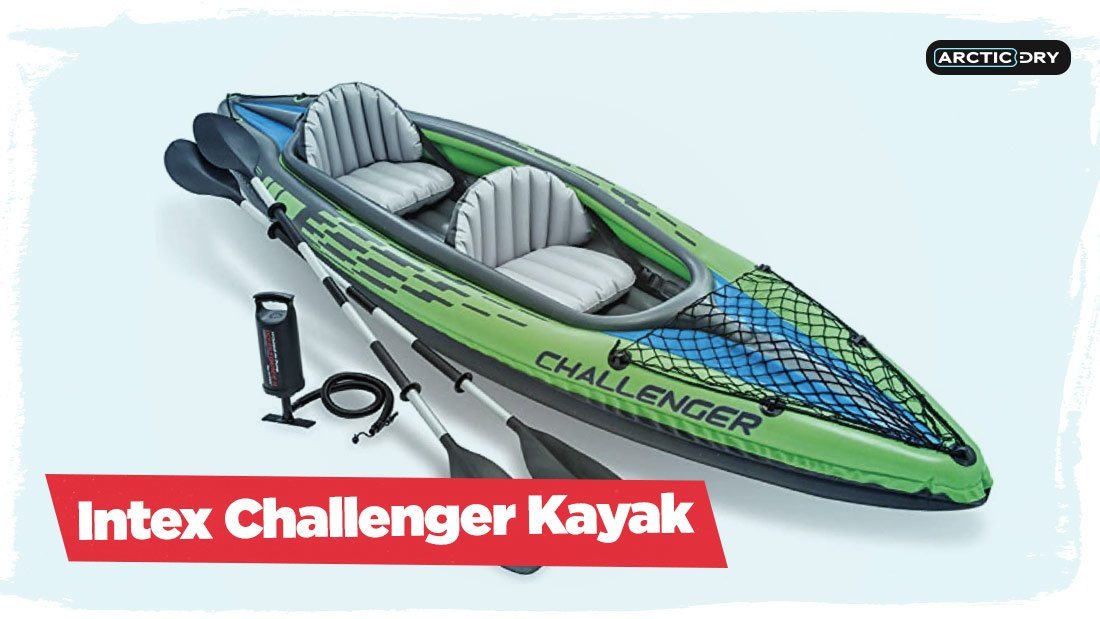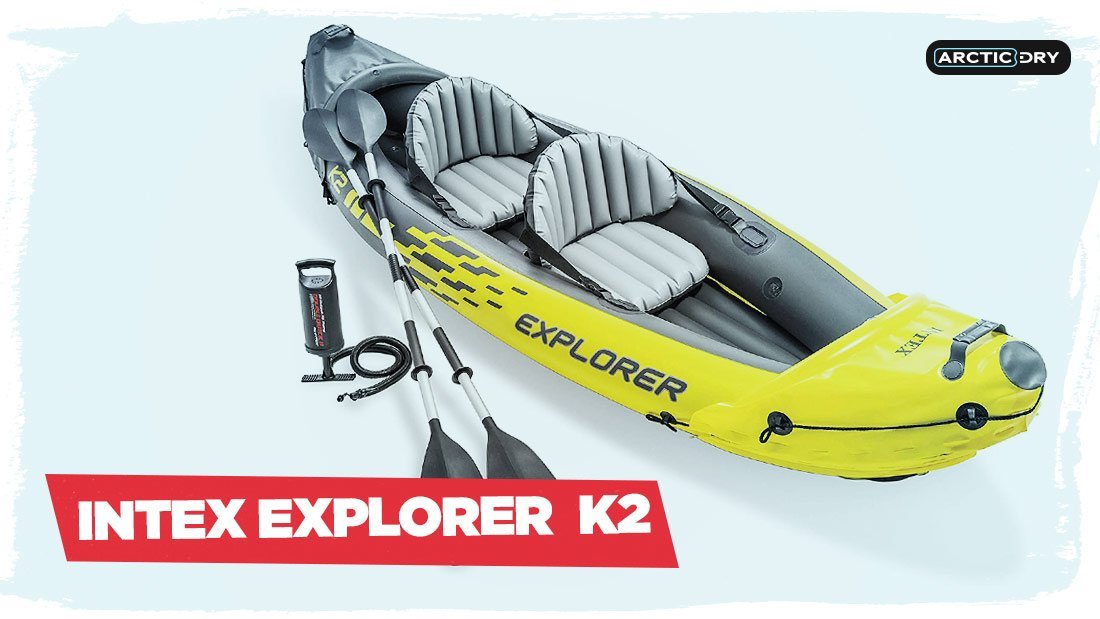Can an Inflatable Kayak be used in the Sea?

Contents
When you picture an inflatable kayak, the first thing that comes to mind is a swimming pool or a calm lake; it doesn’t seem like something that can thrive in the ocean. With all the dangers lurking at sea- strong winds, sharp coral, high tides, riptides, etc. can inflatable kayaks match hard-shell kayaks on the ocean?
As enticing as sea kayaking may sound, you might want to think twice before taking your kayak on the ocean, especially if you’ve gone and bought a £40 inflatable kayak from aldi.
So, the question begs, can you use an inflatable kayak in the ocean?
Generally, inflatable kayaks can be used in the ocean but only experienced kayakers should feel comfortable with this. The latest brands of inflatable kayaks are built to offer a stable and reliable performance just like their hard-shell counterparts.
What are Inflatable Kayaks?
Despite popular belief, inflatable kayaks are not too different from hard-shell kayaks.
They are actually more durable than you’d expect. Thanks to constant advancements in technology, the latest models of these kayaks are designed to cope with tough conditions. This allows you to take them to calm waters, white waters, and even the ocean without the risk of popping or sinking them.
Although they may not thrive in all conditions, they are still a nice option for beginners who want to get into ocean kayaking.
Compared to traditional kayaks, being in an inflatable kayak may feel a little bit unstable, but you’ll be surprised just how reliable it can be once you hit the waters.
Are Inflatable Kayaks Durable?

Inflatable kayaks are made up of multiple layers of material, and drop-stitched to enhance their durability in the water. Some brands use aluminium parts to make the structure more stable and feature other strong materials like polyester and vinyl. This is what enables them to remain intact even after bumping off rock edges in the water.
These materials are generally hard-wearing and can take a beating, but you shouldn’t go dragging the kayak through gravel (duhh). Ultimately, you can expect the craft to hold up well under normal tear and wear conditions.
Inflatable kayaks are built to last and will offer you a reliable amount of protection in the water.
How Stable is an Inflatable Kayak?

What happens when you stand on your inflatable kayak? Won’t it fold and collapse under your weight? This may sound like a reasonable cause for concern; after all, it’s only air that is holding the vessel together, right?
The fortunate news is that inflatable kayaks are amazingly rigid once they are fully inflated.
So, you shouldn’t worry about its stability. However, keep in mind that the key to its stability lies in being fully inflated.
An under-inflated vessel will have a hard time staying afloat, and will barely manage to support your weight on prolonged sails. Usually, you’ll find small inflatable sections on most kayaks that act like rods to improve the framework of the boat.
These help to keep the boat rigid and stable as you row. When optimally inflated, these kayaks will feel almost as rigid as hard-shells. If you plan to try out some whitewater paddling, ensure the kayak you use is designed for rapids.
Do Inflatable Kayaks Get Punctures?
Given their durable construction, punctures are rarely an issue for inflatable kayaks. The use of modern technology and high-grade materials results in a remarkably tough outer shell that lets you rub against tree branches and rocks without compromising the integrity of the vessel.
This is not to say they are fully insured against punctures; inflatable kayaks will suffer a puncture if enough trauma occurs to the vessel.
Sometimes, the seams may get compromised and allow air to leak out or sharp rock edges may manage to poke a hole big enough in the kayak to cause a severe puncture.
While they may happen, punctures are not a common occurrence in inflatable kayaks. Nevertheless, you should always watch out for any obvious dangers when paddling your boat.
Another thing, you want to keep the kayak far away from sharp objects during storage and be extra careful when transporting it. This way, it should serve you for a decent amount of time without any setbacks. But should you get a small puncture, these are easily repairable when you have a small patch kit.
Can Inflatable Kayaks Sink?

The simple answer, like any blow up craft, is yes. Inflatable Kayaks can sink if enough water gets inside. However, due to the design of these crafts, they are actually surprisingly buoyant; and will keep you afloat for a while if they get punctured.
What are the Risks Involved in Ocean Kayaking?

Kayaking is an entirely safe and exciting sport for those who have had the opportunity to partake in it. However, things do get a bit more risky if you decide to take your kayak in the sea, especially in the UK where our waters are a bit unpredictable at times, with currents that are hard to see & swift changes in weather.
No Landmass Nearby
Once you paddle far enough into the sea, you are practically on your own! The open waters can be very unpredictable and dangerous; you are just one strong wave away from being knocked off your inflatable kayak.
Furthermore, here in the UK the weather can change from sunny and warm to cold and extreme without warning around coastal areas.
The worst part is that there is no landmass nearby where you can take immediate refuge when push comes to shove.
Even if you decide to swim for it, you’ll have a hard time pushing through the waters for hours before finding dry land. However, research has shown that the human body can survive 6 to 8 hours of battling waves and cold ocean water a day, but you should remember that this was recorded on professional long-distance swimmers, not the average joe!
Waves

If you have to go cruising in the sea, then look for a vessel that is specifically built to handle waves. A kayak does not fit this profile obviously…
While there are smaller waves that you’ll be able to easily ride, paddling further into the ocean may lead you to bigger and more dangerous waves that will capsize you.
Sharks

Do you need to worry about Sharks here in the UK? Ehh…not really.
However, if you go travelling / abroad and go for a bit of sea kayaking, this is definitely something to consider, and it’s well documented that sharks are inquisitive creatures so a bright yellow inflatable kayak bobbing up and down on the surface will definitely draw some eyes!
However, in general, shark attacks are super rare despite what the media might portray.
Lightning
The sound of a sudden thunderstorm when you are out in the open seas is enough to give you a panic attack! This should make you want to get to shore in the shortest time possible.
Kayaking in the ocean can also expose you to the risk of getting hit by lightning. Usually, lightning strikes the highest object around, so you want to use low-angle strokes when paddling.
It’s also wise to paddle alongside other kayakers but make sure that you’re 20-30 feet away from one other.
Boats

The risk here is not specifically the cargo ships, but more the smaller vessels that people own and run around the coastal areas of the UK. Sometimes these people just have extra money to burn and so go out and buy a boat, only to lack the experience to fully control them.
Hypothermia
The most unfortunate event that can happen to a kayaker in the ocean is when the vessel capsizes. This will immediately expose you to the risk of hypothermia when you stay long enough in the water with no rescue in sight.
If you didn’t think to bring along extra floatation devices or rescue equipment, your goose may just be cooked! Generally, most adventurers who end up in such a situation were probably paddling alone with no emergency kits.
Other situations that may lead to hypothermia include the temperatures taking a sudden drop in the night, thus exposing you to the cold. Also, you can experience seasickness when you stray too far away into the ocean that you start feeling lost at sea.
Rip Tides & Currents
Currents can gradually pull a vessel deep into the ocean without even you realising it.
It may take you some time to notice that you’re not where you started paddling. After all, there are no lanes or street signs in the ocean. Tidal currents can pose a serious challenge for ocean kayakers. You can try to get out of trouble by paddling perpendicular to the current.
What Makes an Inflatable Kayak Seaworthy?

The ocean is a vastness of beauty and natural magic, but it has a very dark side that you don’t want to encounter.
If you have to venture into the sea waters in a kayak, it’s only fair that you get the right type of vessel. The following are six attributes you should look for in a seaworthy kayak:
Long and Wide
It is very easy to capsize when you encounter ocean waves in the wrong type of kayak. To improve your chances of surviving the ordeal, find a long and wide kayak. A wide vessel is likely to resist being toppled over better compared to narrow ones.
They don’t capsize easily when rocked by waves from both sides. Elsewhere, a longer kayak fairs better when you come head-to-head with a wave. A long and solid inflatable kayak may ride the wave but a shorter craft will easily be flipped over.
Straight-moving Kayak
One important feature to consider in a seaworthy kayak is a skeg. This is a small fin at the bottom that helps to keep the vessel stable and moving in a straight line.
A major issue about kayaks is that they tend to turn from side to side when you paddle. This can drastically get worse when you find yourself in wavy waters. But with a skeg at the bottom, the motion of the vessel maintains a straight line.
Sturdy and Solid
Although we’ve mentioned that your kayak should be long. It’s important to make sure that it’s also solid. Long inflatable kayaks bend easily when they are not sturdily constructed.
This may not be able to survive the impact of persistent waves. As such, try to look for a craft with a solid floor that will hold the framework together every time it is struck by a wave.
Furthermore, solid-floor kayaks are more stable and let you stand up in them without getting wobbly.
Self-draining System
As the ocean begins to get rougher, water will surely find its way inside the kayak when waves hit against its sides. This can significantly increase the weight of your vessel and pose a challenge when you try to paddle.
To avoid this, you should look for a model with a self-bailing system. These are designed with little holes on various areas on the floor that drain out any water that gets inside the boat. Water will only go out through the holes but not come in through them.
What Precaution Should You Take When Sea Kayaking?
The latest models of inflatable kayaks are indeed durable, but this doesn’t make them invincible while out at sea. The ocean can get really rough at times and its unpredictable nature means you should tread carefully. To remain safe on the water, don’t paddle far into the ocean, and if possible, try to remain in a group for easy access to help in case of any unanticipated incidences.
Additionally, avoid paddling towards the coral and find your way to dry land when you see the weather changing for the worse. Finally, always wear a life jacket to remain safe in the event the kayak is rocked by a wave and capsizes.
What is the Best Inflatable Kayak?
Intex Challenger Kayak

The Intex Challenger is a luxuriously built inflatable kayak that provides stable performance in the water. It is strong enough to support 400lbs of weight but it can only accommodate one person.
3 air compartments on the boat allow for fast-fill and easy set up while a deflate valve saves you time once you’re out of the water.
The vessel is made out of rugged vinyl material to offer durable performance while an inflatable I-beam floor offers enhanced rigidity. You also get an adjustable seat with a backrest in a roomy cockpit area to make sure you paddle comfortably.
Meanwhile, a grappling rope is handily included to keep you inside the kayak when you hit the rough waters.
The kayak comes with two aluminium paddles that are securely held by the welded paddle supports, as well as an inflatable pump for easy assembly.
A removable skeg at the bottom serves to offer directional stability while a cargo net is included to offer extra storage for accessories.
Intex Explorer Pro Inflatable Boat

When fully inflated, the Intex Explorer measures 196 x 102 x 33 cm, which is enough room to accommodate two people comfortably; an adult and a child. The wide design of the kayak also keeps it stable in the face of rocking waves.
With its sturdy design, the boat can support up to 264lbs. The floor is inflatable to increase the rigidity of the vessel when you stand inside.
You’ll appreciate the inclusion of 3 air chambers on the Explorer, as well as an all-around grab line that you’ll need when the ride gets a little rough.
Setting the kayak up is a relatively easy process, thanks to the quick fill Boston valve on the main hull chamber. Furthermore, the package features a repair patch that is a great addition for when there is slight damage to the boat.
Bestway BW65115 Hydro-Force Kayak

Another quality single-person inflatable kayak you can find on the market is the Bestway BW65115 Hydro-Force. It is constructed with strong pre-tested vinyl to enhance stability and reassure your safety on the water.
A comfortable inflatable seat in the cockpit makes for a great summer experience with its adjustability and a comfortable backrest.
Two double-sided aluminium paddles are included in the package and these deliver great durability and handling.
You also get quick-release valves for convenient setup while form-fitted construction prevents water from getting into the cockpit. Lastly, the Hydro-Force comes with a repair patch and can accommodate a maximum weight capacity of 220 pounds.
Conclusion
If you manage to get a sturdily-constructed model with a rigid structure and the right specifications, inflatable kayaks are as safe as any other water vessels. But if you have to get in the ocean, be careful not to stray too far from the mainland and watch out for any leakage. If you take all the necessary precautions, you should have no trouble paddling your inflatable boat in the ocean.
FAQ
Is an Inflatable Kayak Worth It?
If you like to spend time in water, an inflatable kayak is definitely a worthy investment. They are just as durable and safe as hard-shell kayaks but offer extra benefits when it comes to portability and transportation. Thanks to improving technology, inflatable kayaks continue to become innovative and more practical.
Can You Use an Inflatable Kayak in the Ocean?
Only experienced paddlers should use a sit-inside kayak in the ocean, especially when venturing into deeper waters. For less experienced kayakers, a sit-on-top model will be more practical and offer more reliable performance at sea.
Can a Shark Bite Through an Inflatable Kayak?
Although shark attacks are rare on kayakers, they do happen! Unfortunately, the shell of an inflatable kayak is no match for the sharp, serrated teeth and powerful bite of a shark.
It can easily rip through the material without much effort; hence you should take extra caution before kayaking in the ocean.
Are Inflatable Kayaks Good for Beginners?
Inflatable kayaks are generally stable and hold up well on water. They are also easy to assemble and get into the water, which makes them a good option for beginners. However, you want to look for something long and narrow if you want the vessel to be faster and more maneuverable.










